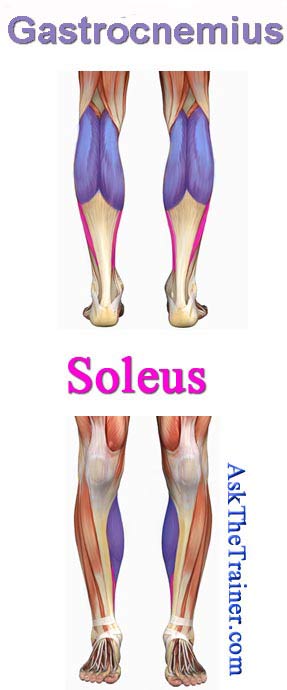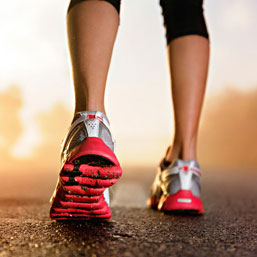- Like
- SHARE
- Digg
- Del
- Tumblr
- VKontakte
- Flattr
- Buffer
- Love This
- Save
- Odnoklassniki
- Meneame
- Blogger
- Amazon
- Yahoo Mail
- Gmail
- AOL
- Newsvine
- HackerNews
- Evernote
- MySpace
- Mail.ru
- Viadeo
- Line
- Comments
- Yummly
- SMS
- Viber
- Telegram
- JOIN
- Skype
- Facebook Messenger
- Kakao
- LiveJournal
- Yammer
- Edgar
- Fintel
- Mix
- Instapaper
- Copy Link
How to Stabilize and Strengthen the Foot and Ankle Complex
The feet and ankles provide support and shock absorption for the whole body.
Stabilizing and strengthening the feet and ankles is key, adding structural integrity to the whole movement system, enhancing performance while preventing injury.
Read on to learn about basic foot and ankle anatomy and biomechanics, common foot and ankle problems, injury prevention, and the best foot and ankle exercises to strengthen the foot and ankle complex.
Jump to the Videos of the Best Foot and Ankle Exercises or continue reading to learn more.
Basic Foot and Ankle Anatomy and Biomechanics
 The anatomy and biomechanics of the foot and ankle complex is, well, complex. This overview will be very brief and general, giving you a basic idea of what you need to know to perform the best foot and ankle exercises and providing a starting point for further study. The AskTheTrainer Anatomy Pages are a great resource to advance your understanding of anatomy.
The anatomy and biomechanics of the foot and ankle complex is, well, complex. This overview will be very brief and general, giving you a basic idea of what you need to know to perform the best foot and ankle exercises and providing a starting point for further study. The AskTheTrainer Anatomy Pages are a great resource to advance your understanding of anatomy.
The ankle joint forms where the tibia and fibula meet up with the talus, which is the large top bone of the foot. The ankle functions as a hinge joint, allowing you to plantarflex (point your foot down as if standing on your toes) and dorsiflex (point your foot up as if to walk on your heels). Muscles and tendons on the outside of the ankle joint allow you to invert or supinate the foot (as if to turn the soles in toward each other) and evert or pronate the foot (as if to turn the soles away from each other).
The muscles which control the ankle originate on the femur and lower leg. The gastrocnemius is the large fleshy calf muscle which plantarflexes the foot. The gastrocnemius attaches to the heel via the Achilles tendon.The soleus is the other main calf muscle, located beneath the gastrocnemius and inserting into the Achilles tendon. The soleus also aids in plantarflexion, but is more a postural muscle, higher in endurance than the gastrocnemius. The main muscle which dorsiflexes the foot is the tibialis anterior, the main shin muscle.
On the outside of the lower leg dwell the peroneals, including the peroneus longus, brevis, and tertius. These muscles work together to evert/pronate the foot as well as assist in plantarflexion. The tibialis posterior, originating behind the shin bone, inverts/supinates the foot and helps stabilize the arch.
The main muscles which control the foot itself include two flexors and two extensors. The extensors originate on the lower leg and spread across the top of the foot, pulling the toes back. The flexors originate on the lower leg and travel across the sole of the foot, curling the toes downward. There are several other muscles in the foot which also aid in foot flexion and extension.
All the muscles mentioned above have the additional vital function of dynamically stabilizing the ankle and foot during functional movement.
In walking, running, dancing, and other forms of exercise, the feet and ankles are taken sequentially through a coordinated movement sequence involving plantarflexion, dorsiflexion, inversion, and eversion. If you read all the information above, you have gotten a taste of the fact that the movements are complex, involving many muscles and their associated tendons.
The bottom line here is that the ankle and foot should be stabilized in each plane of motion to optimize your movements and prevent injuries. If you are an athlete or just a casual exerciser, I encourage you to study the biomechanics of the foot.
Common Foot and Ankle Problems
Since the feet and ankles receive so much impact as you exercise or just go about your daily life, several common problems can develop, leading to aches, pains, and stiffness. Keep in mind that issues affecting the feet and ankles can either be symptoms of (or causes of) larger problems throughout the body. A lack of structural integrity at one point in the body travels throughout the kinetic chain, often causing mischief elsewhere.
Here are a few of the most common problems affecting the foot and ankle complex:
- Achilles Tendonitis: Inflammation and/or degeneration of the Achilles tendon. Manifests as pain on the back of the lower leg.
- Plantar Fasciitis: Inflammation of the plantar fascia, the tough strap of connective tissue running across the sole of the foot. You will feel pain in the arch of the foot, either toward the heel or toward the ball of the foot.
- Sesamoiditis: Inflammation or fracture of the tiny sesamoid bones within the tendon running to the big toe. Causes ball of foot pain under the big toe and second toe.
- Overpronation (flat feet): Overflattening of the foot, collapsing the arch. Often caused by muscle imbalances leading to posture problems. A very common problem leading to many painful foot, ankle, knee, and even lower back issues. Orthotic inserts which provide arch support can help mild cases.
If you have pain in your feet or ankles, it’s best to immediately rest the affected area and visit your physician to see what’s going on. To correct these problems, you may need to see a physical therapist and/or enlist the help of a personal trainer.
Strengthening the Feet and Ankles Prevents Injury
Remember that a lack of structural integrity anywhere in the body has downstream affects along the whole chain of movement. Problems with the feet and ankles are not necessarily only local problems; they can lead to injuries of the knees, hips, lower back, and more. Additionally, injuries which may seem like no big deal can become problematic with repeated stress, initiating the cumulative injury cycle.
That’s why it’s important to support your feet and ankles by stabilizing, strengthening, and stretching. An ounce of prevention is truly worth a pound of cure! The stronger your feet and ankles are, the more stable they will become, and the better able to absorb the impact of exercise and daily living. This article focuses on the strengthening aspect of foot and ankle care, but don’t neglect stretching.
Balance exercises help to stabilize the ankles and feet as well, so consider adding a balance routine to your workouts.
Best Foot and Ankle Exercises
These simple foot and ankle exercises use your body weight, requiring no equipment beyond 20 marbles (keep reading to find out where the marbles come in). Before doing these exercises, or any exercise, it’s best to warm up with some light cardio for 5-10 minutes, then stretch the area about to be worked.
Exercise 1 – The Marble Game
Place 20 marbles or other small objects on the floor. In a standing position, use your toes to pick up the objects one by one and deposit them into a jar as quickly as possible.
For fun, compete with your kids or significant other to see who can get the fastest time! Perform this exercise at least twice for each foot.
Exercise 2 – The Short Foot
The short foot exercise will help strengthen your arches.
Sitting with your feet flat on the floor, draw up your arch by sliding your big toe joint along the floor toward your heel without allowing your toes to curl or your foot to lift. Hold the contraction for 5 seconds, then release.
Repeat three more times, then switch feet. As this exercise gets easier with time, progress to standing on both feet, then balancing on one foot.
Exercise 3 – Negative Calf Raises
Most exercises for the calves or shins will also help to stabilize the ankle. The negative calf raise requires only your body weight and one stair or small step-stool to perform.
With your hand on the wall for balance, stand on the edge of a step with the back halves of your feet hanging over the edge. Engaging your calf muscles, raise your heels to lift your body vertically, then slowly lower down as far as is comfortable.
Perform 10 reps, rest, and repeat twice. This exercise can be progressed by standing on one foot; that way, the leg being worked receives more resistance.
Exercise 4 – Toe Walking
This one is simple and easy to accomplish. You won’t even need a video to know what I’m talking about. Lift up onto your tiptoes and walk around for 30 seconds. Lower back down and rest, then repeat at least twice more. With time, you can progress to running or skipping on tiptoes. This exercise strengthens the calves, ankles, and feet.
Exercise 5 – Heel Walking
Just what it sounds like; heel walking is simply the opposite of toe walking. Lift your toes so you’re standing on your heels. Walk around like this for 30 seconds. Lower down, rest for a few, then repeat at least twice more. This exercise strengthens the shin muscles, ankles, and feet.
As mentioned above, balance training exercises help to strengthen and stabilize the feet and ankles. Read AskTheTrainer’s balance training article to learn balance exercises to add to your routine. You can purchase balance training equipment to use at home for a further challenge to your stability.
Final Thoughts
Speaking from personal experience, I can say that I wish I knew these best foot and ankle exercises before injuring my own feet. I now perform these exercises to correct what I did wrong, but if I had known them in the first place, I probably wouldn’t be having to deal with recurrent foot, ankle, and knee issues.
Treat your body right by focusing some much-deserved attention on your feet and ankles. You won’t regret it; not only will you lower your chance of injury, you will also notice improvements in your athletic performance in terms of agility and strength.
Best Foot and Ankle Exercises: References
1. American Academy of Orthopaedic Surgeons. (2012). Foot and ankle conditioning program. American Academy of Orthopaedic Surgeons, http://orthoinfo.aaos.org/topic.cfm?topic=A00667
2. Clark, M.A., Lucett, S.C., and Sutton, B.G., (Eds.). (2012). NASM essentials of personal fitness training. Philadelphia: Lippincott Williams & Wilkins.
3. Spiker, T. (2007). Builder stronger feet and ankles. Runner’s World, http://www.runnersworld.com/health/build-stronger-feet-and-ankles
4. Tortora, G.J., and Anagnostakos, N.P. (1987). Principles of Anatomy and Physiology. New York: Harper & Row.
See Also:
About Mae Barraclough
Mae Barraclough, B.S., NASM-CPT, NASM-CES is a certified personal trainer, corrective exercise specialist, and licensed Zumba Instructor. With her passion for health, fitness, and dance, Mae loves learning all she can and sharing her knowledge with others.


